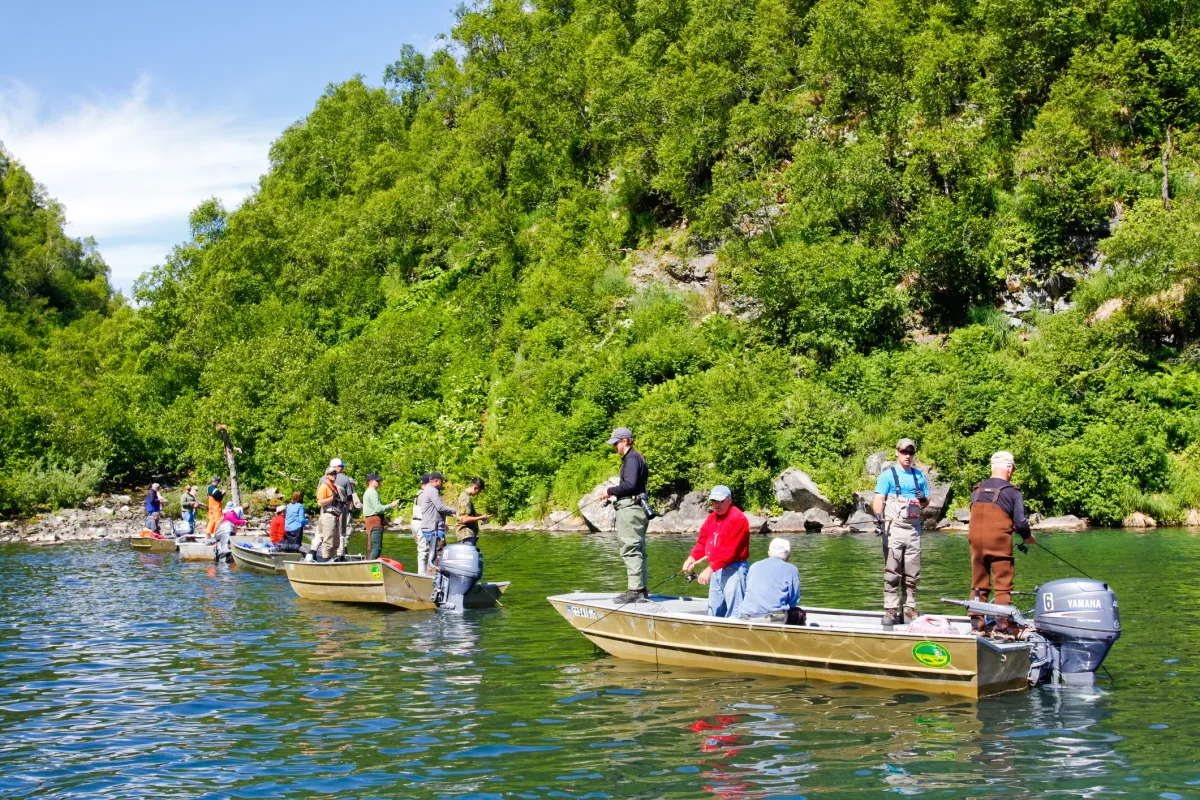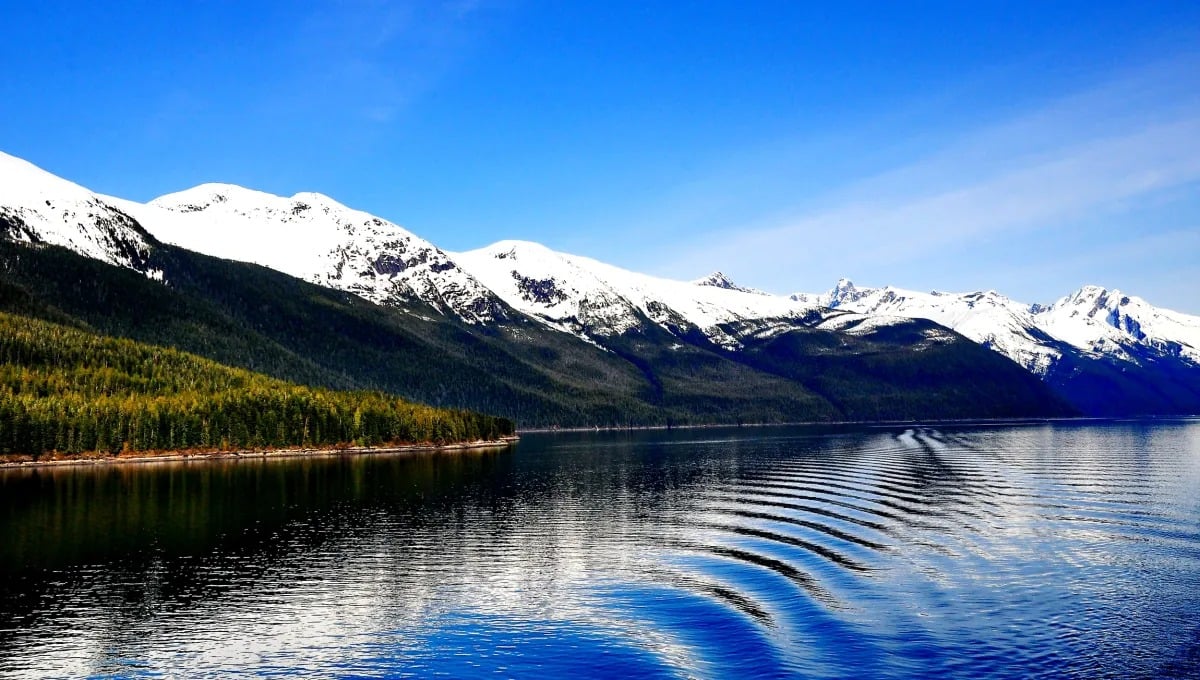
As someone who loves fishing and has visited Alaska several times for this purpose, I can confidently say that Alaska is one of the best places for fishing in the world.
With its vast rivers, streams, lakes, and ocean coastline, the state offers a wide range of fishing opportunities for both casual and experienced anglers. But if you're planning a fishing trip to Alaska, you may be wondering when's the best time to visit Alaska for fishing.
Seasons for Fishing in Alaska
First of all, it's worth noting that Alaska's fishing season varies depending on the species of fish you're targeting and the location you're fishing in. Generally speaking, the peak fishing season in Alaska runs from late May to early September, with the best times to fish depending on the type of fish you're after.
Here's a breakdown of some popular fish species and the best time to catch them in Alaska:
- Salmon: Depending on the species of salmon, the fishing season can run from May to September. The most popular salmon species to fish for in Alaska are king salmon, which run from May to July, and silver salmon, which run from August to September. If you're looking for a challenge, try fishing for sockeye salmon, which are notoriously difficult to catch but run from June to August.
- Halibut: Halibut fishing season in Alaska is open year-round, but the peak season is from June to September. The best time to catch halibut is typically during slack tide, which occurs twice a day when the tide changes direction.
- Trout: Rainbow trout and Dolly Varden trout are abundant in many of Alaska's rivers and streams. The best time to fish for these species is from June to September, when the water is warmer and the fish are more active.
- Arctic Char: This cold-water species can be found in many of Alaska's rivers and lakes. The best time to fish for Arctic Char is from June to September, when the water is warmer and the fish are feeding more aggressively.
| Fish Species | Best Time to Catch |
|---|---|
| King Salmon | May to July |
| Silver Salmon | July to September |
| Sockeye Salmon | June to August |
| Pink Salmon | July to August |
| Chum Salmon | July to September |
| Halibut | May to September |
| Rainbow Trout | June to September |
| Arctic Char | July to September |
| Dolly Varden | June to August |
Of course, the best time to visit Alaska for fishing also depends on your personal preferences and priorities. If you're looking for solitude and less competition, consider visiting in May or September, when the crowds are thinner and the weather is cooler. If you're after the biggest and most challenging fish, aim for mid-summer when the water is warmer and the fish are more active.
According to Captain Tony Weaver, a veteran Alaskan fishing guide with over 30 years of experience, "The best time to fish in Alaska depends on what you're targeting. For salmon, the peak season is generally from late June to early August, with different species running at different times throughout the summer. Halibut can be caught year-round, but the summer months are the most productive. When it comes to trout, the best time to fish is during the warmer months, from June to September."
Three Best Times to Fish for Salmon in Alaska
If you're a fishing enthusiast planning a trip to Alaska, you'll want to make sure you time your visit just right. After all, Alaska is famous for its salmon fishing, and you don't want to miss out on the best opportunities. In my experience, there are three main times to fish for salmon in Alaska: early season, mid-season, and late season.
Early season, which runs from late May to early July, is when king salmon are most active. These are the largest and most sought-after salmon in Alaska, and they're known for their impressive size and fighting spirit. If you want to catch a king salmon, this is the time to do it. The water is still relatively cold at this time of year, which means the fish are more likely to be near the surface and feeding actively. Be sure to pack plenty of warm layers and rain gear, as the weather in Alaska can be unpredictable.
Mid-season, which runs from mid-July to mid-August, is when silver salmon (also known as coho salmon) are most active. These fish are smaller than king salmon, but they make up for it with their speed and acrobatics. They're also more abundant than king salmon, which means you're more likely to catch them. During mid-season, the water is warmer than early season, which means the fish may be deeper and less active. You may need to adjust your fishing techniques to target them effectively.
Late season, which runs from late August to early September, is when sockeye salmon are most active. These fish are known for their bright red color and rich flavor, and they're a favorite of many Alaska fishermen. Late season can be a great time to fish for sockeye, as the fish are making their final push upriver to spawn. This means they may be more concentrated in certain areas and more likely to bite. Be prepared for cooler weather, as September can bring chilly temperatures to Alaska.
According to Dr. Fredrick L. Johnson, a fisheries biologist at the Alaska Department of Fish and Game, "The timing of the fishing season in Alaska is closely tied to the life cycles of the fish species that inhabit its waters. Understanding these life cycles can help anglers predict when and where to find the fish they're after. It's important to keep in mind that weather and environmental conditions can also have a significant impact on fishing success, so be sure to check local weather and fishing reports before heading out."
Two Tips for Fishing in Alaska during the Off-Season
While the peak fishing season in Alaska typically runs from May to September, there are still plenty of opportunities for fishing during the off-season. In fact, fishing during the off-season can offer unique challenges and opportunities that you won't find during peak season. Here are two tips for making the most of your off-season fishing trip in Alaska:
First, target less popular species. During the off-season, some of the most popular species of fish may be harder to find or not as active. This is the perfect time to try your hand at targeting less popular species, such as trout or Arctic Char. These fish can still provide a fun and challenging fishing experience, and you may even discover a new favorite type of fish. Plus, since they're less popular, you're more likely to have the fishing spots all to yourself, allowing for a more peaceful and intimate fishing experience.
Second, visit less popular fishing locations. During peak season, some of the more popular fishing spots in Alaska can become crowded and competitive. However, during the off-season, you'll find that many of these spots are much quieter and more accessible. This is the perfect time to explore some of the more remote and less popular fishing locations in Alaska, such as small lakes or remote streams. These spots may require a bit more effort to reach, but the payoff can be worth it in the form of more abundant fish populations and a more serene and isolated fishing experience.
Three Weather Factors to Consider When Fishing in Alaska
The weather conditions can have a significant impact on your fishing experience, affecting everything from the fish behavior to your own comfort and safety. Here are three weather factors to consider when fishing in Alaska:
Temperature
Alaska's climate is notoriously cold, and temperatures can vary significantly depending on the time of year and location. During the summer months, temperatures can range from the 50s to the 70s, while in the winter, temperatures can drop well below zero. When planning your fishing trip, it's important to consider the temperature and pack appropriate clothing and gear. Dressing in layers is key, as it allows you to adjust your clothing as the temperature changes throughout the day. Be sure to pack warm hats, gloves, and socks to keep your extremities warm.
Precipitation
Alaska is known for its rainy weather, with some areas receiving up to 100 inches of rain per year. Rain can have a significant impact on fishing, making it more challenging to catch fish and affecting the water conditions. When planning your trip, check the weather forecast and pack appropriate rain gear. A good rain jacket and pants can make all the difference in keeping you dry and comfortable during a rainy fishing day.
Wind
Wind can also affect your fishing experience in Alaska, particularly when fishing on open water. Strong winds can make it difficult to cast your line and can even make it dangerous to be out on the water. Be sure to check the wind forecast before heading out on your fishing trip, and be prepared with appropriate gear to protect yourself from the wind. A good hat or headband can help keep your ears warm and protected from the wind.

